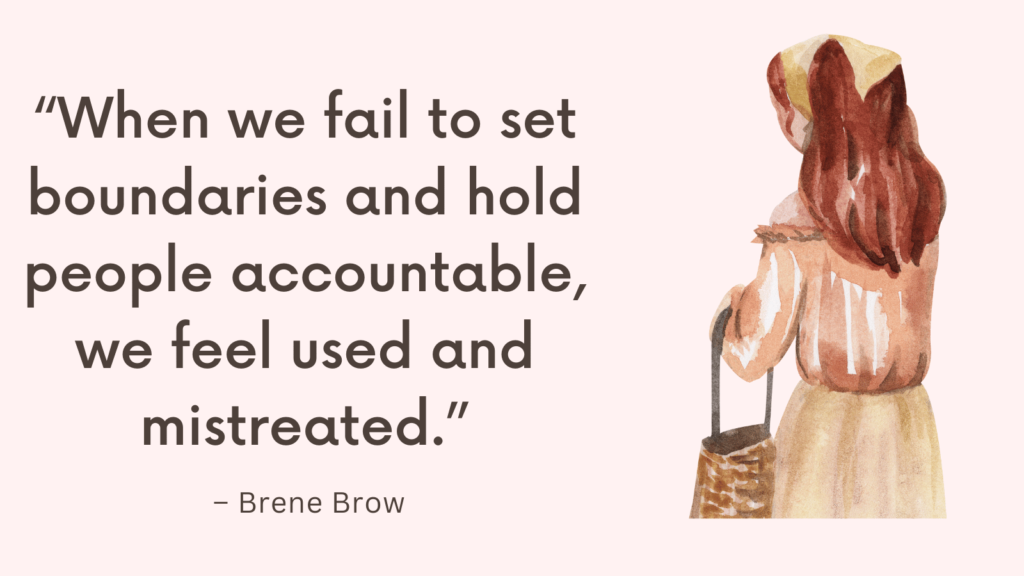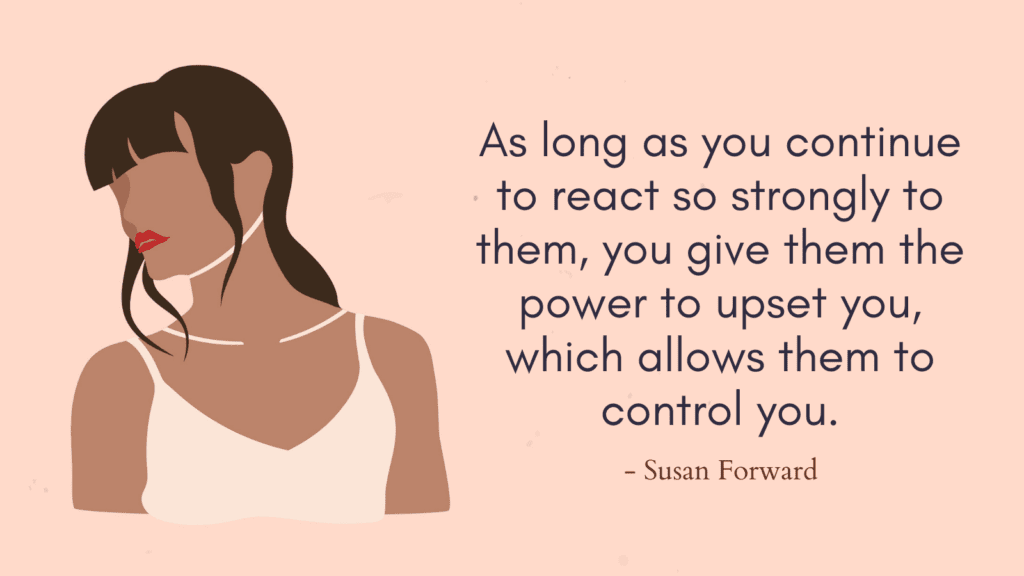This post contains some of the best tips on letting go of toxic people.
What Constitutes Toxic Behavior?
Toxic behavior refers to patterns of interaction that are harmful, manipulative, or emotionally damaging to others.
It can occur in various relationships, such as friendships, romantic partnerships, family dynamics, or professional settings.
While the specifics may vary, common characteristics of toxic behavior include:
1. Manipulation: Toxic individuals often engage in manipulative tactics to control or influence others. This can involve emotional manipulation, gaslighting (making someone doubt their perceptions), guilt-tripping, or using others for personal gain.
2. Lack of respect and empathy: Toxic people frequently disregard the feelings, boundaries, and needs of others. They may show a consistent lack of empathy, fail to take responsibility for their actions, or dismiss others’ emotions as insignificant or irrational.
3. Constant criticism and negativity: Toxic individuals tend to criticize and demean others regularly. They may focus on flaws and weaknesses instead of providing constructive feedback. This constant negativity can erode self-esteem and create a hostile environment.
4. Verbal and emotional abuse: Toxic behavior often involves verbal aggression, insults, yelling, or belittling remarks. Emotional abuse can manifest as threats, humiliation, intimidation, or controlling behavior, leading to emotional distress and a sense of powerlessness.
5. Boundary violations: Toxic individuals frequently disregard personal boundaries and invade others’ privacy. They may consistently cross physical, emotional, or psychological boundaries without regard for consent or individual autonomy.
6. Lack of accountability: Toxic people often avoid taking responsibility for their actions or consequences. They may deflect blame onto others, make excuses, or refuse to admit fault. This can make it challenging to address and resolve conflicts.
7. Emotional instability: Toxic individuals may display erratic emotional states, such as sudden outbursts of anger or emotional volatility. Their unpredictable behavior can create an unstable and unsettling environment for those around them.
8. Isolation and sabotage: Toxic people may try to isolate others from their support networks, discouraging healthy relationships and fostering dependency. They may also engage in sabotaging behaviors, undermining others’ confidence and successes.
It’s important to note that toxic behavior exists on a spectrum, and not all individuals displaying these characteristics are necessarily entirely toxic.
However, recognizing these behavioral patterns can help you identify and address toxic dynamics in your relationships.
Related: 5 Weird Things Covert Narcissists Do To Manipulate Their Victims
Top 10 Tips on Letting Go of Toxic People
Dealing with toxic people can be emotionally draining and detrimental to our well-being.
However, it is important to remember that we have the power to choose who we surround ourselves with and to prioritize our own mental and emotional health.
1. Identify Toxic Behaviors and Patterns
The first step in letting go of toxic people is to recognize their harmful behaviors and patterns.
These may include constant criticism, manipulation, disrespect, emotional or physical abuse, and a consistent lack of support or empathy.
It is essential to acknowledge that these behaviors are not acceptable and are detrimental to your well-being.
2. Set Boundaries
Recognize that you have the right to set boundaries and prioritize your well-being. It is not selfish to protect yourself from toxic behavior.
Reflect on the specific behaviors or actions that are unacceptable to you. Determine what you are willing to tolerate and what crosses the line.
Clearly express your expectations and boundaries in a calm and firm manner. Use “I” statements to express how their behavior impacts you. For example, say, “I feel disrespected when you constantly criticize me. It’s important to me that we have more constructive conversations.”
It is crucial to back up your words with consistent actions. If someone continues to violate your boundaries, follow through with consequences, such as limiting contact or withdrawing from the relationship temporarily or permanently.
Related: How To Set Boundaries With A Narcissist?
3. Practice Self-Care
Engage in self-care activities that nurture and rejuvenate you.
Take time to do things that bring you joy, relaxation, and fulfillment.
This could include exercise, hobbies, spending time with loved ones, practicing mindfulness, or seeking therapy.
Prioritizing self-care helps build resilience and provides the strength needed to distance yourself from toxic relationships.
4. Surround Yourself with Positive People
Surrounding yourself with positive and supportive individuals can counterbalance the negativity associated with toxic relationships.
Seek out friendships and connections that provide encouragement, understanding, and respect.
Being part of a supportive network can improve your self-esteem and overall well-being.
Related: What Do Boundaries Sound Like? + 35 Boundaries Examples
5. Acknowledge Your Feelings
Acknowledge and accept your emotions surrounding the toxic relationship.
It is perfectly okay to feel sadness, anger, and grief. Allow yourself to process these emotions without judgment.
Journaling, talking to a trusted friend, or seeking professional help can provide a safe outlet for expressing and processing these feelings.
6. Detach Emotionally
Emotional detachment involves consciously disengaging from the toxic person’s negative behavior and emotional influence.
It does not mean shutting down emotionally but rather protecting yourself from their toxic impact.
Practice self-awareness and respond rather than react to their actions.
Focus on maintaining your emotional well-being rather than getting caught up in their drama.
Related: Top 10 Tips to Practice Compassionate Detachment
7. Practice Forgiveness
Forgiveness is not about condoning or forgetting the harm caused by toxic individuals.
Instead, it is a personal choice to let go of resentment and anger that can consume your own happiness and well-being.
Understand that forgiveness is a process that may take time and involve different stages.
8. Focus on Personal Growth
Invest your time and energy into personal growth and development.
Engage in activities that enhance your skills, knowledge, and self-confidence.
Pursue new interests and set attainable goals for yourself.
Focusing on personal growth helps shift the focus from the negativity of toxic relationships to your own personal fulfillment.
Related: Forgiving Someone Who Isn’t Sorry: 9-Step Guide To Free Yourself From The Past

Conclusion
Letting go of toxic people is a journey toward personal growth, self-preservation, and emotional well-being.
Remember, you deserve to be surrounded by people who uplift and support you, and letting go of toxic individuals is an act of self-love and self-care.



